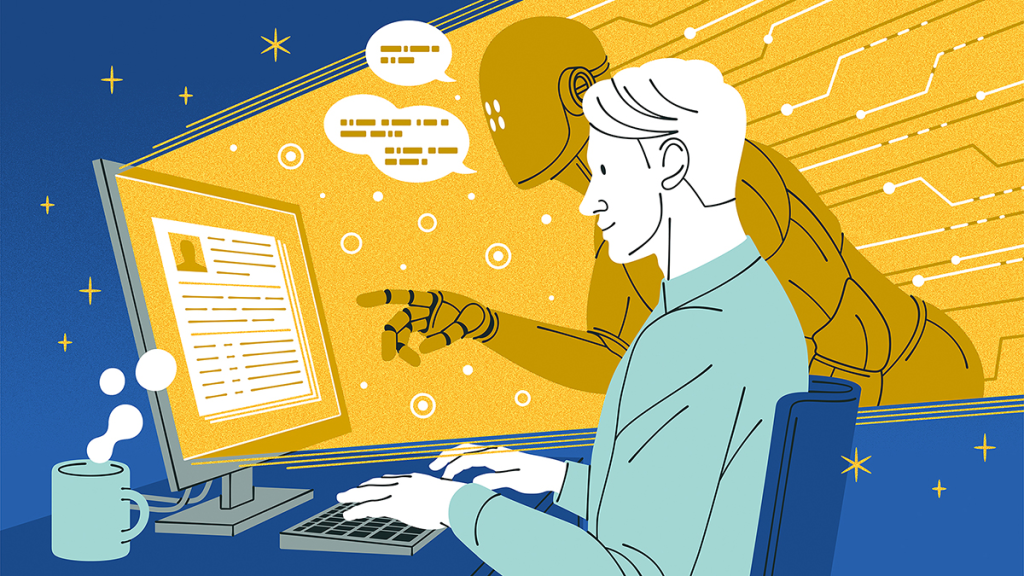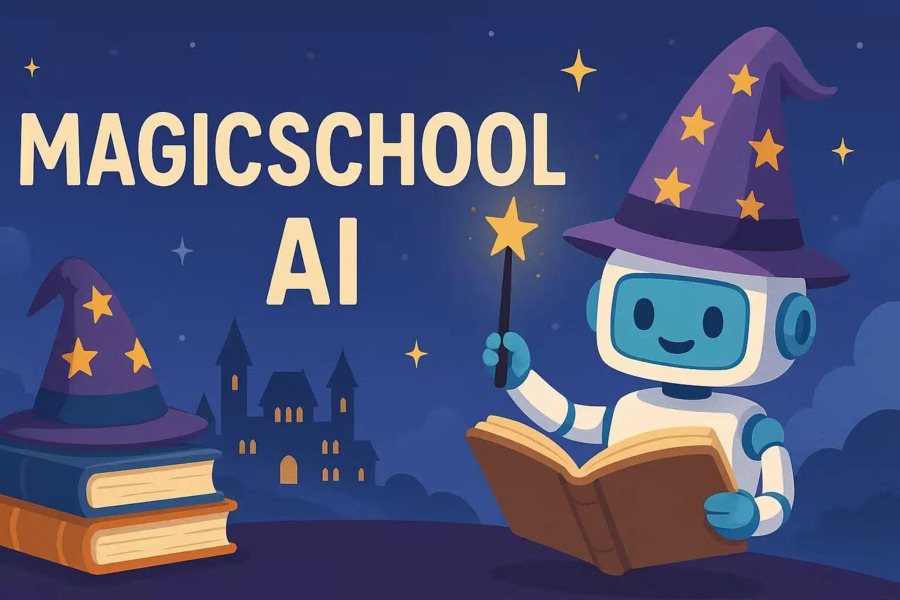Writing a resume is nobody’s idea of fun. The job market is competitive, and a generic resume won’t cut it. Every word needs to pack a punch, every bullet point should scream, “Hire me!” But crafting that perfect resume? It’s tedious, confusing, and downright exhausting.
What if you had a secret weapon to turn your scattered work history into a polished, attention-grabbing resume? Enter ChatGPT. This AI tool isn’t magic, but when used right, it’s like having a personal resume coach, editor, and brainstorming partner—all rolled into one.
So, how to use ChatGPT for resume writing without sounding like a robot? We will explain it step by step and provide useful tips. Let’s break it down.
Should You Use ChatGPT to Write Your Resume?
The short answer? Yes—but with a caveat. ChatGPT is powerful, but it’s not a replacement for you. Think of it as a brilliant assistant: it can handle the heavy lifting, but you need to guide it, fact-check its work, and inject your personality.
The Pros
1. It saves you time.
Ever spent hours tweaking your resume for one job, only to realize you need a completely different version for the next? ChatGPT can generate tailored drafts in minutes—perfect when you’re applying to multiple roles and your brain feels fried.
2. It offers fresh perspectives.
Struggling to describe that project you crushed? ChatGPT can rephrase your experience, highlighting skills you didn’t even realize were relevant. It’s like having a career-savvy friend say, “Hey, remember when you did X? That’s actually a big deal for this job!”
3. It adapts to your needs.
Need a resume that screams “tech-savvy” for a startup or “detail-oriented” for a corporate role? Just tell ChatGPT what you’re aiming for, and it’ll adjust. No more forcing your experience into a generic template.
The Cons
1. It doesn’t know your career story.
ChatGPT only works with what you give it. If you say, “Write about my marketing experience,” you’ll get vague fluff. But if you say, “I led a $50K campaign that boosted sales by 30%,” it’ll craft something impactful. Garbage in, garbage out.
2. It can sound robotic.
Ever read a sentence that felt too polished, like it was written by an alien pretending to be human? That’s ChatGPT without edits. Your resume should sound like you—not an AI.
How to Use ChatGPT for Resume Writing (Step by Step)
1. Write a Strong Summary

Your resume summary is the first thing recruiters see. Most are painfully generic: “Results-driven professional with 5+ years of experience seeking a challenging role.”
How ChatGPT helps:
- Feed it the job description – Copy/paste the key requirements.
- Tell it your real experience – Instead of “I did marketing,” say:*”I managed a $30K ad budget, grew LinkedIn followers by 40%, and trained 2 interns. Write a 3-line summary for a digital marketing role.”*
- Edit to sound like you – If ChatGPT’s draft says, “Dynamic marketing strategist,” but you’re more low-key, change it to “Data-driven marketer focused on measurable growth.”
2. Turn Weak Bullet Points into Achievements
Bad bullet points:
- “Responsible for social media.”
- “Helped with customer service.”
Good bullet points:
- “Grew Instagram followers from 1K to 10K in 6 months through Reels strategy.”
- “Reduced customer response time from 24 hours to 2 hours, improving satisfaction scores by 30%.”
How ChatGPT helps:
- Ask: “Rewrite this bullet to sound stronger: ‘Managed email campaigns.'”
Output: “Created and optimized email campaigns, increasing open rates from 15% to 28%.” - Always add numbers – If you don’t have exact stats, estimate:“Make this more specific: ‘Improved sales process.'”
Output: “Streamlined sales follow-ups, cutting approval time by 20%.”
3. Customize Your Resume for Each Job
Sending the same resume everywhere is a mistake. A startup wants to see scrappy results; a corporate job values structured processes.
How ChatGPT helps:
- Paste the job description and ask: “What keywords should I include for a [job title] role?”
- Reframe your experience – Switching from sales to customer success? Ask: “Rephrase my sales experience to focus on client relationships.”
4. Proofread and Polish
Your resume is short—usually 200-300 words—but a single typo can make a recruiter think, “If they can’t proofread their resume, how will they handle this job?”
ChatGPT isn’t perfect for proofreading long essays, but it’s fantastic for sprucing up your resume’s summary or bullet points.
Try: “Proofread this resume summary for clarity and grammar. Make it sound more professional but still like me: [paste your summary].”
It’ll fix awkward phrases (“I am good at working with teams” becomes “Collaborate effectively with cross-functional teams”) and catch typos you missed (looking at you, “manger” instead of “manager”).
Read More: How to Use ChatGPT to Write Emails?
5 Tips for Using ChatGPT for a Resume
ChatGPT can be a game-changer, but only if you use it effectively. Follow these AI writing tips to avoid common pitfalls:
- Be specific with your ChatGPT prompts (the more details, the better). ChatGPT thrives on specifics. Instead of “Write about my job at X company,” say, “At X company, I was a customer support rep. I handled 50+ daily inquiries, reduced response time by 20%, and trained 3 new hires. Write a bullet point that highlights these for a customer success manager role.” The more information you provide, the less generic the output will be. It’s like baking a cake—you need all the right ingredients for it to taste good.
- Feed it all your “assets.” ChatGPT needs context to personalize your resume. Share your current resume, the job description, your key achievements, and even the company’s values (check their website!). The more information you give, the less generic the output will be.
- Edit like a hawk. ChatGPT might suggest “Increased revenue by 150%” when you actually increased it by 15%. Or it might invent a skill you don’t have. Always cross-check every line against your actual experience. If something feels off, change it. Your resume should be 100% truthful—no exceptions.
- Get a human’s opinion. AI is smart, but it can’t replace a second pair of human eyes. Ask a friend, mentor, or even a former colleague to read your resume.
- Double-check for errors. AI can miss typos, especially in bullet points. Use a tool like Grammarly to scan your resume after ChatGPT has worked its magic. Then, read it backward (seriously—this trick helps you catch mistakes your brain tends to skip over when reading normally).
Key Takeaways on How to Use ChatGPT for Resume
ChatGPT isn’t here to write your resume for you—but it is here to make the process easier, faster, and less stressful. It can help you highlight your best self, tailor your resume to different jobs, and transform boring bullet points into attention-grabbing statements.
But remember: The best resumes are a blend of AI power and human heart. ChatGPT lays the groundwork, but you add the personality, the specifics, and the undeniable truth.
So, fire up ChatGPT, grab your job descriptions, and start crafting a resume that doesn’t just list your experience—it tells your unique story. Your dream job is out there, and with a little AI help, your resume will be the one that gets you in the door.
Read More: How to Use ChatGPT to Make Money?



